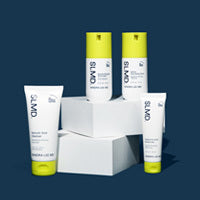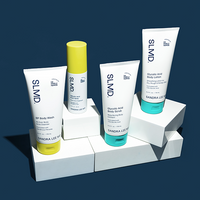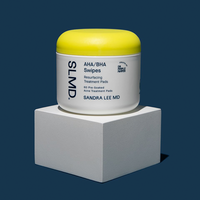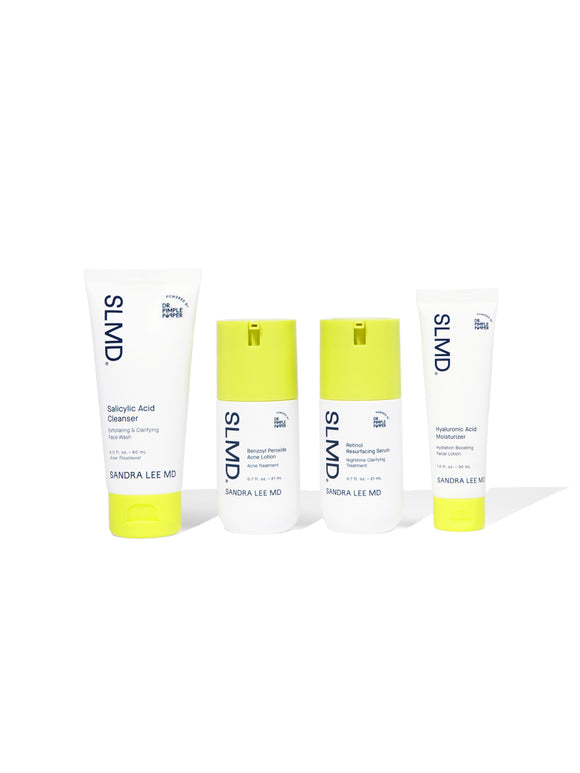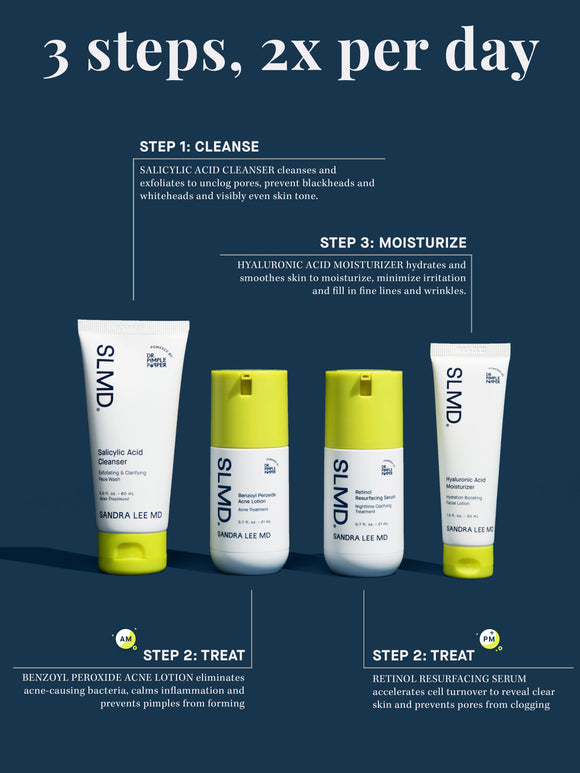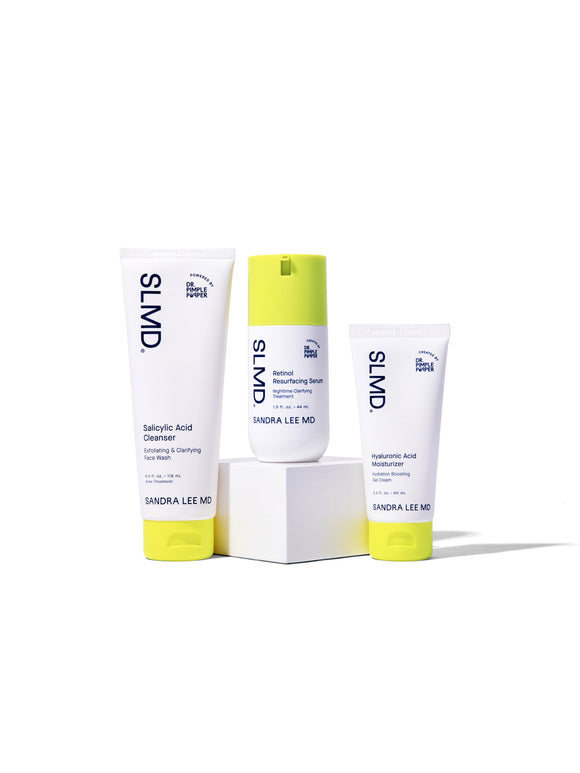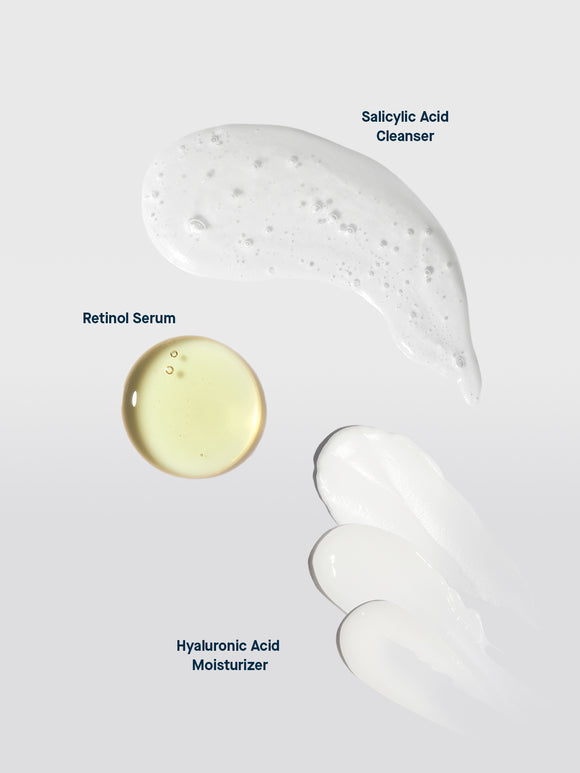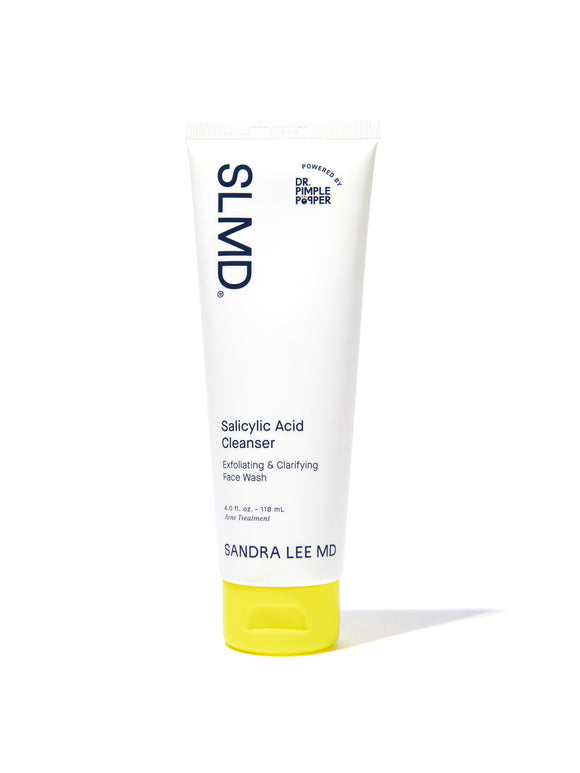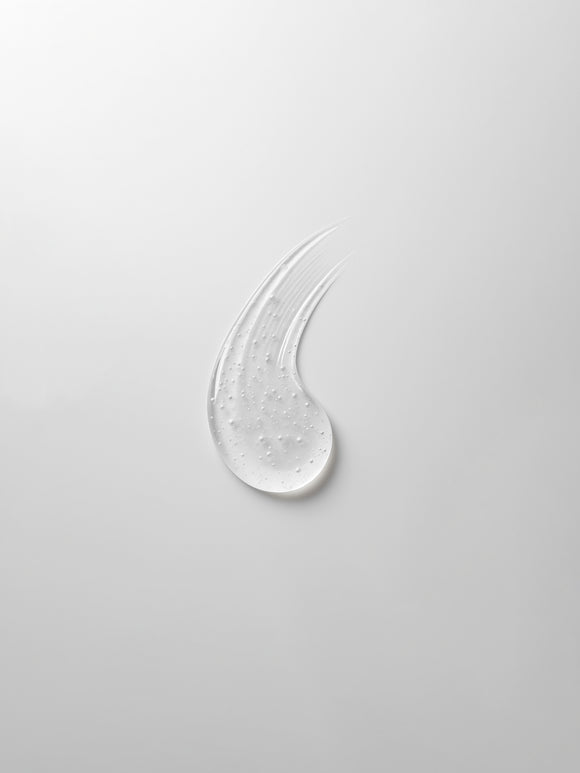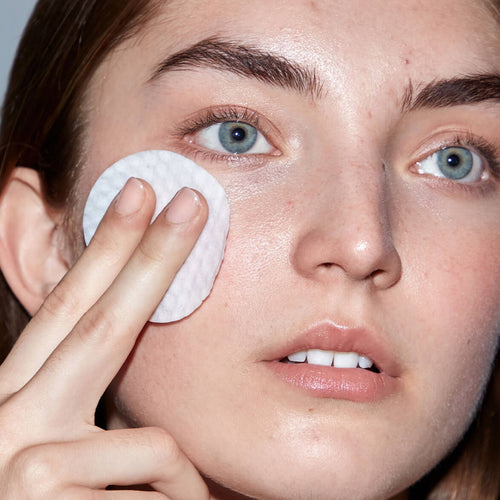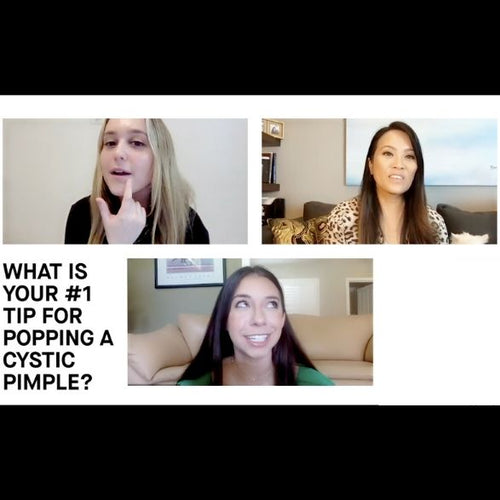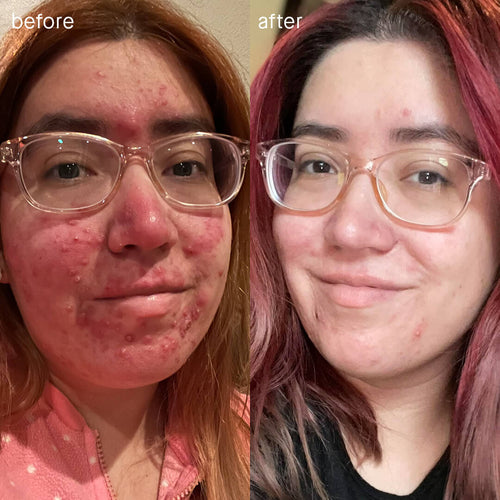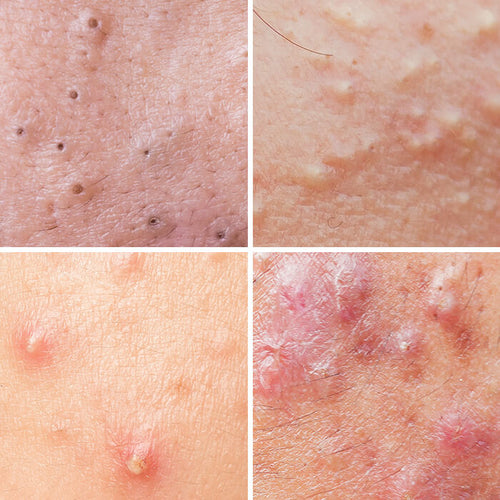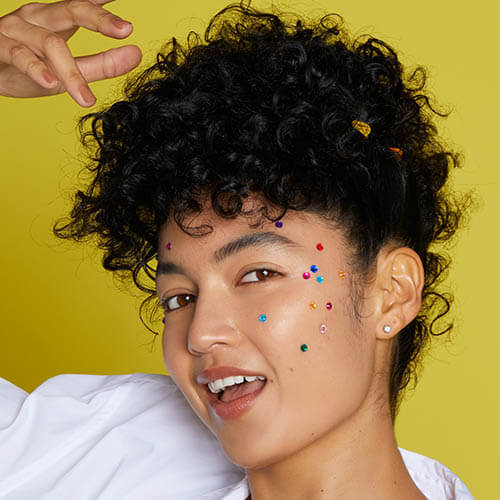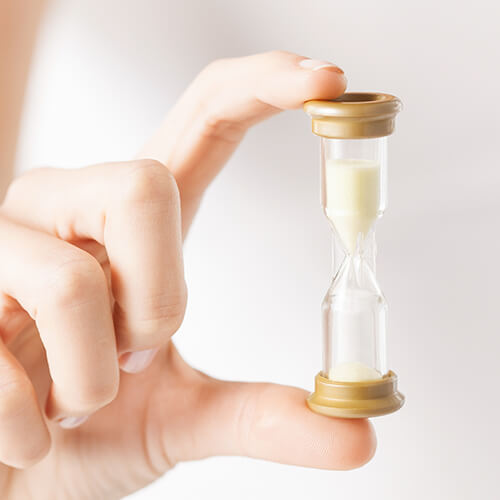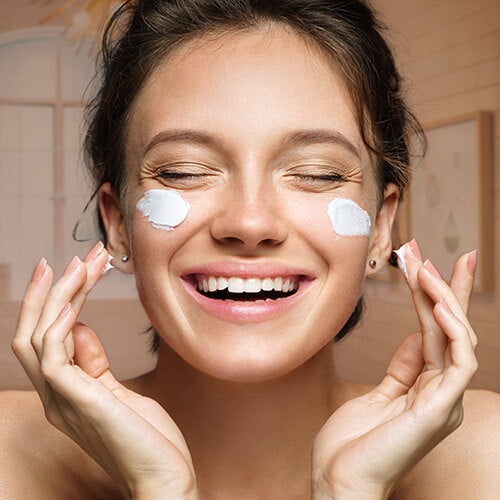
Top 10 Retinol Myths Debunked by Dr. Pimple Popper
Misconceptions about this multi-tasking wonder abound — we're separating fact from fiction.
Published:
4 minute read
Retinol is one of the most clinically proven active ingredients in skincare, yet misconceptions still abound. Who should use it? When should you start? How does it actually work? Dermatologist and SLMD Skincare founder Sandra Lee, MD (aka Dr. Pimple Popper) is here to clear up the confusion and debunk the top 10 retinol myths.
#1: Retinol, retinoid, retinyl, Retin-A: they’re all the same
While these “R” ingredients all belong to the vitamin A family, they aren’t interchangeable. The term retinoid refers to the entire class of vitamin A derivatives, which includes retinol, retinoic acid, and retinyl esters. The main difference between them lies in bioavailability—how easily your skin converts these ingredients into retinoic acid, the active form that stimulates cell turnover and collagen production.
Breakdown of potency (from strongest to weakest):
- Retinoic acid: the most bioavailable form, directly usable by skin cells. Found in prescription products like tretinoin.
- Retinol: a non-prescription option that must be converted to retinoic acid in two steps. Try: SLMD Retinol Resurfacing Serum
- Retinyl esters (e.g., retinyl palmitate): the gentlest form, requiring three conversions to become retinoic acid.
The stronger the retinoid, the faster it works—but it’s also more likely to cause irritation.
Dr. Lee’s pro tip: "Understanding the different types of retinoids can help you choose the right one for your skin’s needs, whether you’re treating acne or looking for anti-aging benefits."
#2: Wait until your 30s to use retinol
This myth is based on the misconception that retinol is solely an anti-aging ingredient. In reality, retinoids were first developed to treat acne, making them suitable for teens and young adults. Starting in your 20s can help prevent fine lines, even out tone, and keep breakouts in check.
Dr. Lee’s pro tip: "Cell turnover slows in your mid-20s, so starting retinol early is a proactive way to maintain healthy, youthful skin."
Dr. Pimple Popper's Retinol Routines
#3: Retinol is too strong for sensitive skin
The redness, flaking, and irritation that can happen with retinol use is known as the retinization period (aka the "retinol uglies"), which typically lasts 2–3 weeks. Once your skin adjusts, these side effects usually subside. How to manage it:
- Start with a small amount (pea-sized) every other night.
- Layer a gentle moisturizer on top to reduce irritation. Try: SLMD Hyaluronic Acid Moisturizer
- Gradually increase usage as your skin adapts.
Dr. Lee’s pro tip: "Almost anyone can use retinol — it’s about starting slowly and giving your skin time to acclimate."
#4: You have to wait to apply retinol after washing your face
Some believe you need to wait for your face to completely dry before applying retinol — but that’s not a hard-and-fast rule. Damp skin absorbs actives more easily, which can enhance effectiveness for some but lead to irritation for others. If your skin is sensitive, waiting a few minutes after washing may help reduce redness or stinging.
Dr. Lee’s pro tip: "If your skin tolerates it, you can apply retinol right after patting your skin dry — but always follow your dermatologist’s instructions."
#5: Retinol thins your skin
This myth is only partially true. Retinol thins the stratum corneum (the outermost layer of dead skin cells), which is why skin can appear smoother and fresher. However, it also stimulates collagen production in the dermis, strengthening the deeper layers of your skin and improving elasticity.
#6: Avoid retinol near your eyes
The delicate eye area can benefit from retinol as much as the rest of your face. As long as you avoid applying it too close to your lash line, it can help reduce crow’s feet, minimize fine lines, and even out tone.
Dr. Lee’s pro tip: "Don’t skip your under-eye area — it’s one of the first places to show signs of aging."
#7: Don’t combine retinol with AHAs or BHAs
Retinol and exfoliating acids (like glycolic and salicylic) can work together if used in moderation. Acids remove dull surface skin, allowing retinol to penetrate more effectively. However, overuse of actives can lead to irritation.
How to combine safely:
- Alternate nights: Use acids one night and retinol the next to minimize irritation.
- AM/PM option: Apply acids in the morning and retinol at night if your skin tolerates it.
- Limit exfoliation: Apply acids a few times weekly to avoid over-exfoliating.
- Protect with sunscreen: Always wear SPF during the day, as AHAs can increase sun sensitivity. Try: SLMD Daily Moisturizer with SPF 15
Dr. Lee’s pro tip: "Listen to your skin — if you’re experiencing irritation, scale back on exfoliation or retinol."
#8: Retinol only works for wrinkles
This myth overlooks retinol’s versatility. Retinol isn’t just for anti-aging — it’s also effective for treating acne, fading dark spots, and evening out skin tone. Its ability to boost collagen makes it a go-to for improving skin texture and elasticity.
Dr. Lee’s pro tip: "Retinol is a multitasker—think of it as an all-in-one solution for healthier skin."
#9: Retinol makes your skin more sun sensitive
This common myth stems from the fact that retinol degrades in sunlight, which is why it’s best used at night. However, the most recent research suggests that retinol doesn’t actually increase your skin’s sensitivity to UV rays. Learn what's most likely causing that typical redness in our blog about retinol and sun exposure here.
Dr. Lee’s pro tip: "Sunscreen is essential to protect skin every day, whether you use retinol or not."
#10: Retinol takes too long to work
Many people think retinol takes forever to deliver results, but it’s important to evaluate what “too long” really means. While some improvements, like smoother texture or fewer breakouts, can appear within 6–8 weeks, more significant changes — like fading dark spots or reducing wrinkles — take 3 to 12 months of consistent use. Considering retinol works to address the deeper layers of your skin, this timeline seems reasonable for achieving lasting, transformative results.
Dr. Lee’s pro tip: "Patience is key with retinol. Stick with it for at least 3 months to start seeing results, and don’t forget sunscreen to protect your progress."

Dr. Lee's Last Word
Retinol is one of the most versatile and effective ingredients in skincare, but it’s often misunderstood. Start slow, stay consistent, and you’ll see the science-backed benefits for yourself. It’s worth the commitment!
